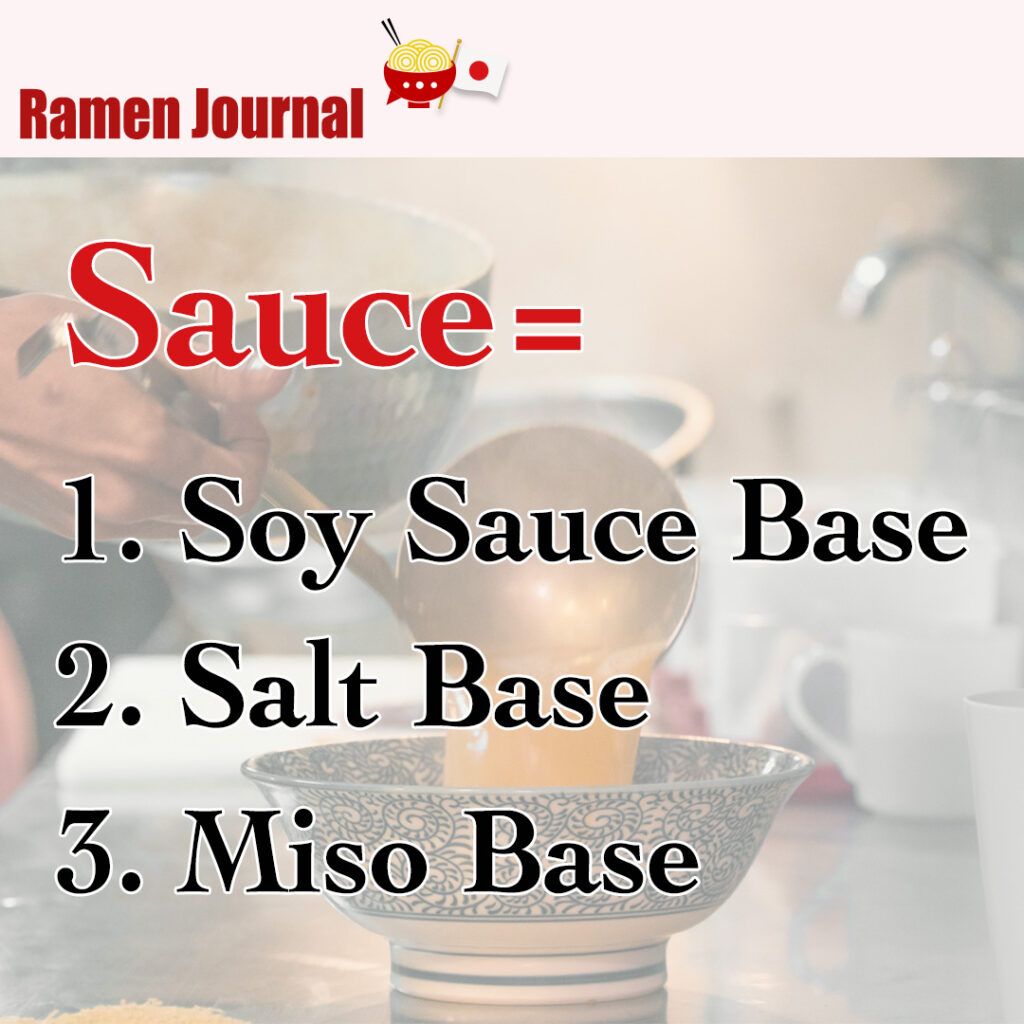As a Japanese native, let me delve into one of the three crucial components of ramen soup: the Sauce.
Have you ever noticed at a ramen shop that before the soup is poured, a small amount of liquid is added to the bowl? That’s the Sauce.
The sauce greatly influences the flavor of the ramen. However, the ingredients and seasonings vary significantly across different recipes and restaurants, each contributing to the unique taste of the sauce.
As I introduced in Vol. 4 about Broth, sauce is a vital element in crafting ramen soup. Each restaurant has its own recipe and ingredients, making the special sauce a signature of their ramen. Here are some classic types:

1. Soy Sauce Base
Typically used in soy sauce ramen, this sauce is made by simmering soy sauce with garlic, ginger, and sake. The amounts of each ingredient are adjusted to create a unique flavor profile. Recipes may also include green onions, dried shiitake mushrooms, and kelp to add depth to the taste.
2. Salt Base
The salt base is used primarily for salt ramen. Unlike soy sauce or miso, salt alone does not contain various umami components. Therefore, the combination of other ingredients and seasonings is crucial, making salt base considered a challenging sauce to perfect.
Ingredients like kelp, bonito flakes, sake, soy sauce, and mirin are added to enrich the flavor beyond mere saltiness.
3. Miso Base
Used mainly for miso ramen, this sauce is made with miso paste and often includes sake and soy sauce. Some variants might include chili peppers or chili oil, known as “spicy miso.” Since miso is a robust seasoning, a thicker broth is typically used to balance its intensity.
Ramen Soup’s Diversity
As you might have noticed, these sauces do not strictly categorize ramen soup into clear types. While traditional styles like soy, miso, and salt ramen exist, variations like pork bone ramen can feature soy or miso bases. Appreciating ramen through the lens of which sauce predominates allows you to discover the broad spectrum and enjoyment of ramen flavors.
